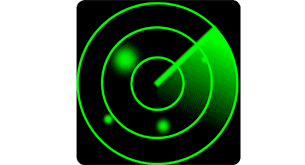Facts About Radar for Kids
Posted by Admin / in Science Facts
At one time radar technology was cutting-edge and very mysterious to most people. Today many people now understand how radar works and most people have experienced some form of radar first-hand. Find out facts about the history of development of radar and the facts about the science behind radar.

Facts About Radar
- RADAR stands for Radio Detection and Ranging
- Radar is a frequency band on the electromagnetic spectrum. Other bands on the electromagnetic spectrum include microwaves and x-rays.
- Radar is used by sending electromagnetic waves out. When an object is hit by the waves, the time, frequency and direction of the deflected waves are used to calculate the location of an object and its relative speed to the radar station.
- Radar was invented in 1935 by a Scottish physicist named Robert Watson-Watt while he was working for the British military.
- Other scientists such as Nikola Tesla who invented radio waves, predicted that radio waves could be used to detect large objects as early as 1900.
- Radar is used by most countries military to detect planes in the air.
- Police use radar to detect the speed of vehicles to see if they are driving too fast
- NASA used radar to calculate the distance between the Earth and other planets in our solar system.
- NASA also used radar to map the surface of Venus from the space probe Magellan, using synthetic aperture radar (SAR). 98 percent of the planet's surface was successfully mapped during this mission.
- Air traffic controllers use radar. They communicate positions of other aircraft to pilots so they can avoid other planes.
- A magnetic resonance imaging (MRI) test uses a form of radar to look at the details inside the human body without cutting the body open. An MRI is a very useful tool for doctors to help diagnose their patients.
- Surveyors use a form of radar called LIDAR. LIDAR uses light waves instead of radio waves to map the earth's surface. Many construction projects are mapped today using LIDAR.
- Meteorologists (people who predict the weather) use radar. First meteorologists used Doppler radar which used the Doppler effect to track storm movement. Now a new technology called NEXRAD or Next-Generation Radar is being used to accurately predict the weather.
